You know how sometimes you’re not really listening and you suddenly hear someone say your name? I’m certain that I heard my name said twice during speeches at the Ryusei Matsuri. And in the Japanese pronunciation, so it’s not like I heard something that just sounded familiar. I’m not even sure of what Japanese words would sound close enough to my name that it’d sound like it…
Started with a good ol’ Toyoko Inn breakfast. Though curiously, it included curry as an option, which I’m not sure I’ve ever seen at a Toyoko Inn before, but which I did see every morning at Comfort Stay Miyabi. Not sure about curry for breakfast, though…
Then I left the hotel and returned to Utsunomiya Station. Today’s destinaton: Nikko, on the Nikko Line, which starts at Utsunomiya. The Nikko Line platform was quite packed, and with a great deal of foreigners, which is unsurprising, as Nikko (along with Hakone) is one of the biggest tourist attractions near Tokyo – since I’ve been to neither before, I thought I’d rectify that this trip. On the platform, though, I found one “queue here” marker with noone queueing there, despite every other marker being at least eight or ten people deep. Not wanting to look a gift horse in the mouth, but feeling a tiny bit guilty, I queued there.
Hopped on the train, along with everyone else, and it wound up quite packed. Had a bit of an entertaining moment when I somehow hooked my camera strap through one of the zippers on my suitcase as I was throwing it into the luggage rack, so I almost threw myself up there too. Then I settled down to enjoy the ride. I managed to snag a seat, and I was in the rear carriage, so not many photos of the view. I could tell that this is a more touristy train because the announcements were all given in not just Japanese and English, but also Chinese and (I think) Korean (which I’m not really sure I would know by ear).
At the other end, everyone hopped off – and it was several degrees cooler than it was in Utsunomiya. Almost considering now if I want to wear the thermals tomorrow. In any case, first things first: check into the hotel. Since there’s no Toyoko Inns in Nikko, I’m staying in another hotel I found on Booking dot com – the Nikko Station Hotel 2, a couple of blocks from Tobu Nikko Station, which itself is a couple of blocks from the JR Nikko Station. It looks fairly new, though they seem to have a weird concrete-and-chipboard motif going.
With the luggage safely stored, I headed out unburdened for sightseeing. But first, I popped into a supermarket I’d spotted to maybe buy a Tupperware container or something for my paper umbrella. I quite like how it’s a normal-looking supermarket with a mountain right behind. No luck with the container (best I could find was takeaway food containers, which’d probably squash too easily), but I decided to buy some snacks, including some morning tea – what I’d initally taken to be some kind of bread roll with tsubu-an (chunky red bean paste) in it, it turned out to be a fist-sized lump of straight red bean paste. It kinda sat in my stomach like… well, a fist-sized lump.
Also, saw this sitting in the supermarket car park – it’s a rice polishing station. If you grow your own rice (or are given au naturel rice by someone who does), you need to use this to get rice you can eat – cleans the husk off… and more, if you keep polishing. I’d heard about these before, but never actually seen one. Or at least, never noticed that I’d seen one. You don’t see them in the big cities.
From there, I decided to walk to Nikko’s biggest attraction: the UNESCO World Heritage listed “Shrines and Temples of Nikko”. It wasn’t a bad walk. Nice mountains all around. Crossed the Daiya River a few times, and even here there’s evidence of some hydraulic excitement in recent days (though Nikko largely escaped being hit by Hagibis, fortunately – though the Tobu line tracks have been severed between Kurihashi Station and Tochigi Station, so the Tobu trains aren’t running).
Soon, I arrived at the entrance to the temple complex, the Shinkyo Bridge. Though, “shinkyo” means “sacred bridge”, so really it’s just “the Shinkyo”. According to legend, it was first built by a god named Jinja-Daioh in the year 766, but it was first built in its current form in 1636, and rebuilt to the same pattern as needed. Until 1973, it could only be used by messengers of the imperial court, but in that year, it was opened to visitors. It costs 300 yen to cross, though, and because it’s not open at the other end, you need to cross back again, and then use the modern bridge to reach the temples. Also, it has its own goshuin, which surprised me, but only on loose paper, which I’m going to have to glue in (and also trim to size, because it’s slightly taller than my shuincho, so that’s definitely waiting until I can sit down with a steady hand and a good pair of scissors).
Headed inside, and ran right into a crowd. I discovered recently that Nikko Tosho-gu, the primary shrine of the complex, has an autumn festival on October 16th and 17th each year – which is to say, today and tomorrow. Discovered today that it’s one of the two Grand Festivals of the year (the other one being in May) – the main event is on tomorrow, featuring a grand parade of a thousand samurai, bringing the three portable shrines back from the Sojourn Hall (where they were taken in May) back to the main shrine. Today’s event was shinji-yabusame – sacred archery on horseback. And it’s a complete coincidence that I happen to be staying here these two days. (Think I’ll stick with my original plans for tomorrow, though, and not go back to Tosho-gu for the parade.)
Anyway, it was still a little while until the archery would start, so listened to the taiko drums that were being played for a bit, then wandered off to see my first temple in the complex: Rinno-ji. It’s actually the Buddhist counterpart Nikko Futarasan Shrine, also in the complex (and yeah, its got the same name as Futarasan Shrine in Utsunomiya) – Futarasan Shine enshrines three mountain kami, and Rinno-ji’s main hall, Sanbutsu-do – the Three Buddha Hall – enshrines three Buddhas (specifically, Amida Buddha, Thousand-Armed Kannon, and Horse-Headed Kannon) that are said to be the Buddhist manifestations of the mountain kami. It’s also the largest building in the complex.
No photos were allowed inside, and the outside was under renovation, but it was very impressive all the same – you walk around the outside hall of the building, and you can see large gold statues of the three Buddhas in the inner sanctuary, and then you climb down a flight of stairs, and you’re suddenly underneath the three Buddhas, looking up at them – there’s a storey-deep chasm between the Buddhas and the screen dividing the inner sanctuary and worship floor. I wonder how many other temples are like that – I always thought it was basically flat. It cost a little more than I would have expected to enter, but you could pay by Suica, which was interesting.
Once I’d emerged from there, it was about time for the horse riding to start. Standing at the back of the crowd, I tried using the Canon Camera Connect app on my phone for the first time – basically connects the phone to the camera (by a wifi signal generated from the camera) which lets me use the phone as a viewfinder and remote control. Then I could just hold my camera over my head, like a human selfie stick, and see quite easily. Quite tiring, though. It started with a procession of all the participants and their attendants in full costume, then the archery started. Each rider gallops uphill, shooting at three targets in succession while on the move – I was nearest the third target. I tried shooting a few riders in drive mode, and I think I got some ok shots. The third rider almost didn’t stop at the end, and knocked over one of the horse wranglers (though she was ok).
I also noticed, as I was jostling for a spot in the crowd, that there’s a signpost by the approach road marking the point at which is the altitude is precisely 634 meters (which, if you recall, is the height of the Tokyo Skytree – actually, side note here, the Tobu Nikko Line connects directly to the Tobu Skytree Line, so it’s possible to get there from here with one train… if the rails weren’t out).
Moved on from there soon, though, because I was starting to get peckish. And my arm was tired. I ate at a nearby eatery called Kishino, which specialises in the Nikko food specialty, yuba. Yuba is tofu skin – basically, the skin that forms on top of soy milk when you start heating it (the first step of making tofu). For a long time, it’s been an important source of protein for the vegetarian monks of the complex. I decided to order the yuba meal set (the most expensive item on the menu, but hey, I’m on holidays) – fresh yuba with soy sauce and wasabi, deep-fried yuba roll simmered in soy sauce, yuba with ground sesame dressing, and clear soup with dried yuba, with sides of simmered fern sprouts, pickled vegetables, and rice. Also included my old friend, the sponge.
After lunch, it was back up the hill to Tosho-gu. To be precise, this is the Tosho-gu Main Shrine – shrines named Tosho-gu enshrine Tokugawa Ieyasu, the first shogun of the Tokugawa Bafuku, and he was deified after his death as Tosho Daigongen (hence the name Tosho-gu). There’s currently about 130 Tosho-gu shrines in Japan – including the one in Ueno, which I visited back in 2017 – but what makes this one in Nikko the main shrine is that Ieyasu is actually buried here. Ieyasu’s son Hidetada ordered the shrine built to honour his father; his grandson Iemitsu had it greatly enlarged and lavishly decorated, and it’s certainly largely great and decorated lavishly – Tosho-gu has some forty-two buildings included in the UNESCO listing. The shrine cost 1300 yen to enter, though, which was a fair bit more than I’d expected.
Heading inside, the first thing I saw – after admiring the buildings of the outer courtyard – was one of the most famous decorations: the Three Wise Monkeys. It’s the second of eight wood-carved panels displaying monkeys in various stages of life which surround the Shogun’s stables in the shrine, and pretty much the only one known outside of Japan. They have names: Mizaru (see-no-evil), Kikazaru (hear-no-evil) and Iwazaru (speak-no-evil). Tosho-gu didn’t invent the idea, but it certainly popularised it. (Side note, the three monkeys are sometimes accompanied by a fourth monkey, folding his arms – Shizaru (do-no-evil). Also, the fact that they’re monkeys is a pun – the ~zaru suffix is actually a negative verb ending form, but it’s also coincidentally a voiced version of “saru” which means “monkey”.)
The second most famous decoration is the sleeping cat, Nemuri-Neko, which sits atop the archway leading to the stairs to Ieyasu’s mausoleum – it’s apparently inspired a whole generation of artists. It symbolises peace – aside from the fact that it’s sleeping, there’s also two sparrows on the reverse side. Both the cat and the monkeys (and, I presume, other carvings) had actually been restored in 2016 for the first time in sixty years, and they certainly looked pretty pristine now. That said, everything I’d heard before visiting said that the sleeping cat was behind a second paywall… I mean, ticket booth, and you couldn’t even see it (much less pass under it) without paying more money, but there didn’t seem to be anything in my way – perhaps that’s why the main entry cost so much.
So, I headed through, and up the two hundred and seven stone steps leading to Ieyasu’s mausoleum at the top, and though it was quite a climb, I rather enjoyed the greenness of everything, from the trees all around to the moss on the bannister. And right at the top, of course, was the mausoleum itself. And a vending machine, filled entirely with one brand of canned tea – you can have any drink you like up there, so long as it’s tea. And also a booth selling goshuin, as I’d half feared there might – feared, because I’d left my shuincho at the main shrine office to get a goshuin there. Fortunately, she was selling them on loose paper (actually, I think that might have been all she was offering) so I bought one. It’s exactly the same size as the shuincho, and, for some reason, yellow. Might trim it down a bit all the same.
Way back down at the main shrine, I entered the main building proper – had to leave the shoes outside. Like Rinno-ji, this was also under restoration. And no photos were allowed inside. And also it was filled with children on a school excursion – they were all sat down inside the worship hall for a short service, and I took the opportunity to see the sights and scram for the shoe shelves before they all came out at once.
Tosho-gu seen, it was off to the next shrine: Futarasan Shrine, at the other end of a long, straight approach road lined with stone lanterns (which might have belonged to Tosho-gu, I rather suspect) this shrine was quite pretty, and also contains several extra buildings in a ticketed enclosure, though this one cost a more reasonable 200 yen. One building was completely shrouded in scaffolding, but you could climb a flight of stairs into the scaffolding to see the restoration works underway. There was even a cafe in there selling teas and other drinks made with water from a sacred spring that was next door (though sadly it had juuust closed when I arrived… not that I drink tea). You could also drink straight from the spring, too. I had a taste, and it wasn’t bad (though hardly as “super delicious” as the signage around it claimed).
Heading out the front gate from there brought me to my final temple for the day (as everything was about to close): Taiyu-in. Although it’s called “-in” (one of the suffixes indicative of temples), and administered by Rinno-ji, it’s technically a Shinto shrine, as it enshrines Tokugawa Iemitsu (Ieyasu’s grandson, and the third Tokugawa shogun). First, I encountered Jogyodo, a hall where walking meditation (= jogyo zanmai, hence the name of the hall) is practiced – it basically involves walking around the statue of buddha in the middle while chanting. I was instructed in how to do it by signs inside, but elected to pass on the chanting – it was, however, very serene in there. (Also, there was a sign up saying that the fifteenth of every month is a special day for goshuin, but I couldn’t read the sign well enough to ascertain exactly why. Shame today’s the sixteenth…)
From there, I headed into Taiyu-in. Again, very grand – but not quite as grand as Tosho-gu, to show deference to the grandfather – but also very peaceful. And while most shrines face south (because it’s auspicious), this one faces directly towards Tosho-gu.
I kinda thought this guy looks like he just got out of the shower.
As I left, I discovered the temple’s gate was closed – they were waiting in the temple office to return my shuincho, which I’d left to be inscribed, which made me feel a little but guilty about enjoying the serenity so much. There was a sign pointing the way up a nice-looking road to one more shrine that could have been worth a visit, but the sign also said it was about a twenty-five minute walk, and the sun was already about to set, soo… next time?
Instead, I caught the bus back to the station. I wanted to see if I could buy a two-day value pass that’d cover my bus travels for tomorrow (and Friday, considering it’s a two-day pass, but tomorrow’s travel covers the entire cost on its own), but tragically, the bus ticket counter had already closed. And even worse, it won’t open tomorrow until three minutes after the bus I want to catch tomorrow departs. Gonna have to ponder what to do about this.
Instead, I topped up my Suica card (used it a lot at all the temples today) then went to find somewhere for dinner… and came up almost completely empty. It kinda seems like Nikko turns into a ghost town at night, and there’s practically no restaurants serving dinner. I was tossing up between heading for the Gusto family restaurant up the street, getting something from a convenience store, and a small eatery that seemed to be serving every dish known to man, except with the meat replaced with yuba, but eventually settled on a ramen shop in between. I had miso butter corn ramen. Then it was straight back to the hotel for blogging and sleep.
Today’s photo count: Seven hundred and fifty two.
Today’s step count: 16,444 steps – 12.4 kilometres – 39 flights of stairs (that’s a lot of stairs)
Today’s goshuin count: Nine. Monday’s record is still secure. From the right, then: Rinno-ji’s Kuromon (yeah, the gate has its own goshuin – no idea why), Sanbutsu-do (Rinno-ji, again), Daigoma-do (Rinno-ji, too), Tosho-gu, Tosho-gu Okusha (inner shrine), Futarasan Shrine, Jogyo-do, Taiyu-in, Shinkyo. And that filled the first half of my second shuincho. Rinno-ji actually had a sign up listing six possible goshuin – looks like I missed one: Yakushi-do, which on the map looks to be somewhere inside Tosho-gu…
I was also given these along with two of my goshuin, but I have no idea even what they are (some kinda… textured sticker, I think), much less that they’re for. The text at the top reads “Congratulations – New Era Name “Reiwa””
Today’s stamp count: One – JR Nikko Station. I wonder if the Tobu station has one too…

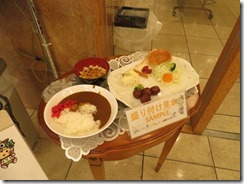
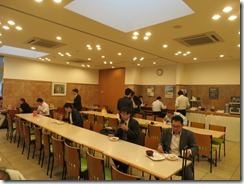
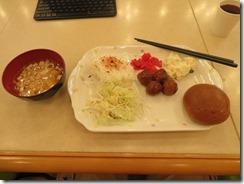
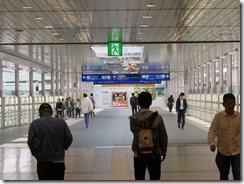
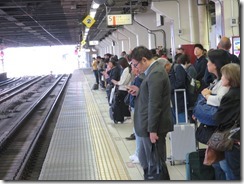
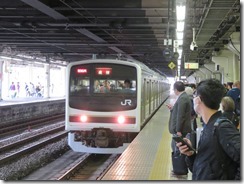
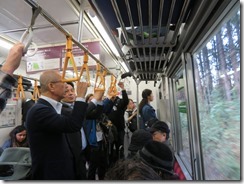
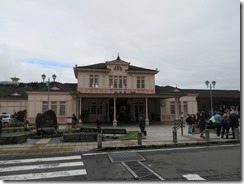
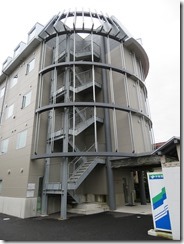
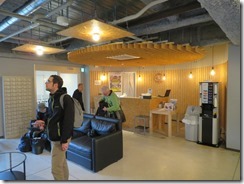
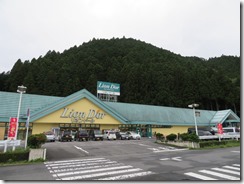
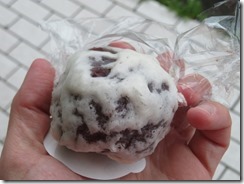
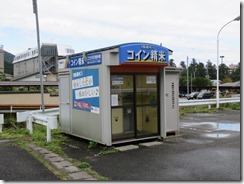
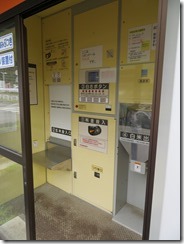
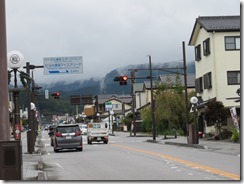
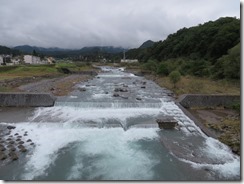
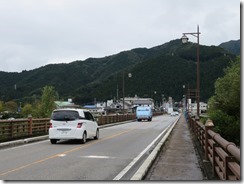
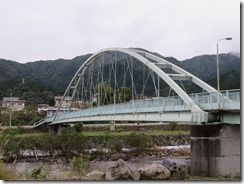
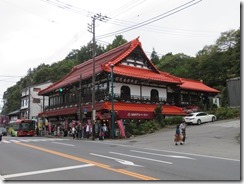
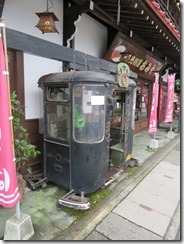
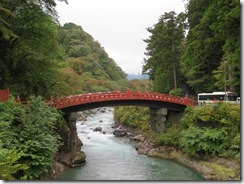
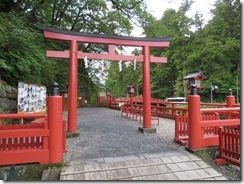
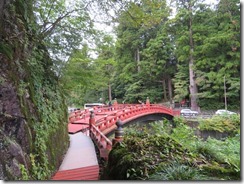
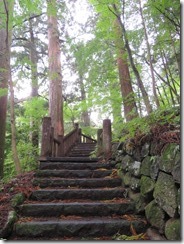
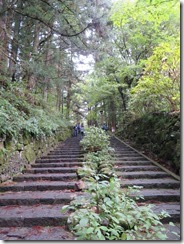
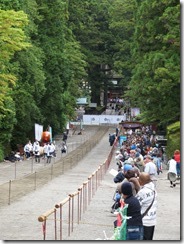
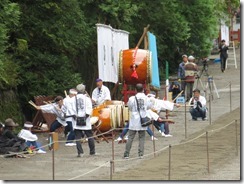
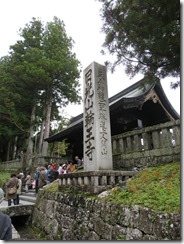
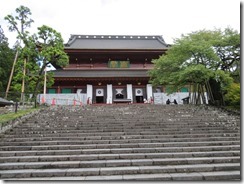

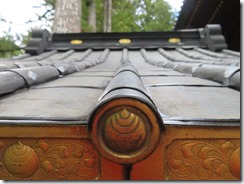
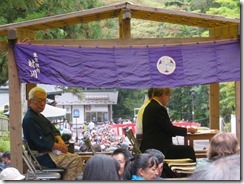
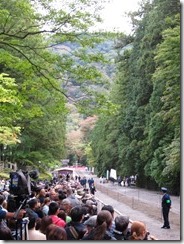
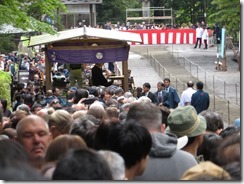

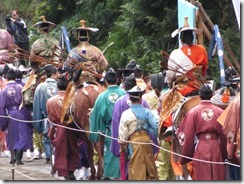
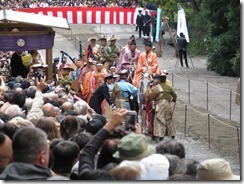
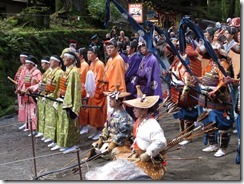
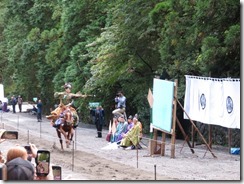
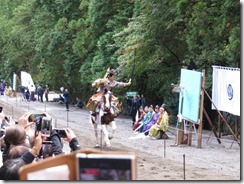
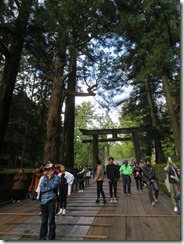
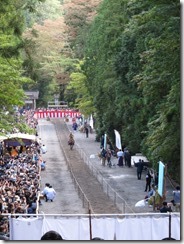
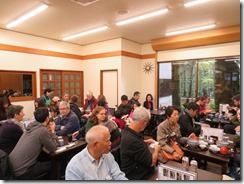
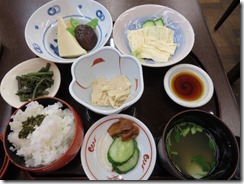
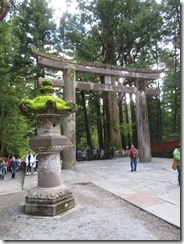
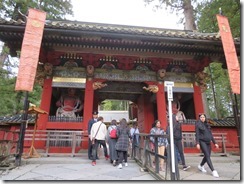

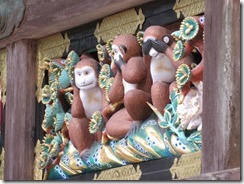
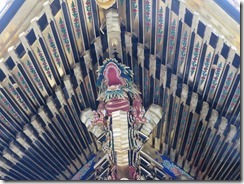
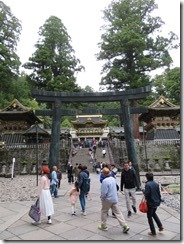
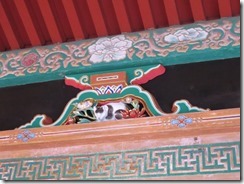
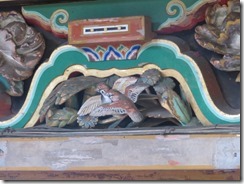
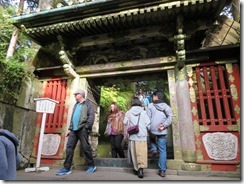
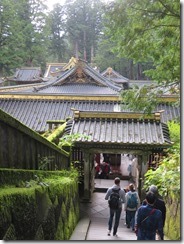
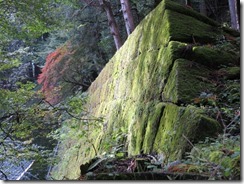
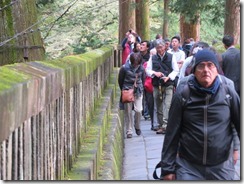
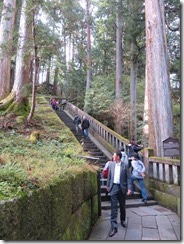
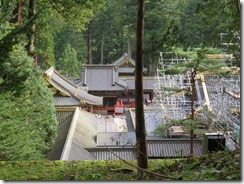

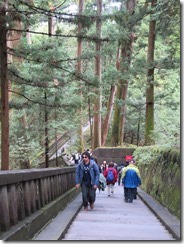
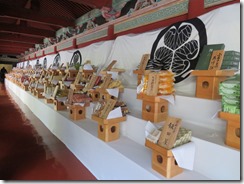
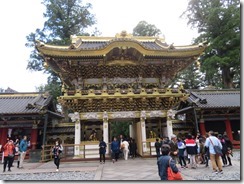
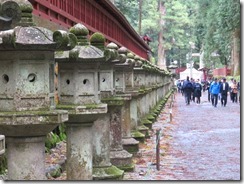

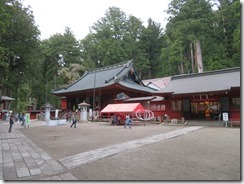
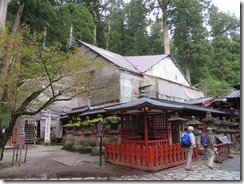
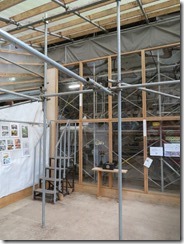
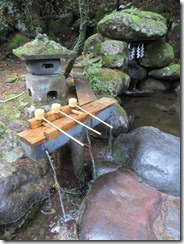

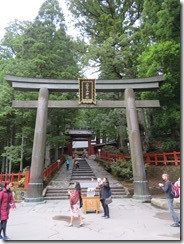

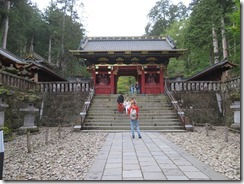
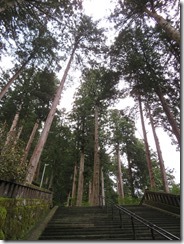


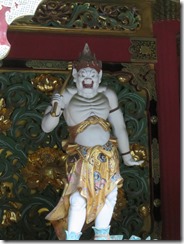

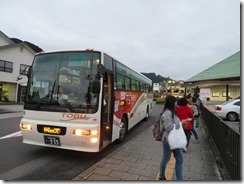
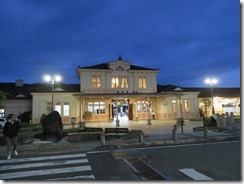
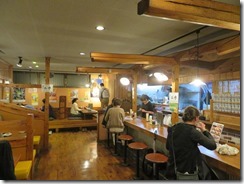
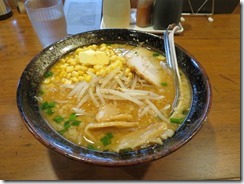
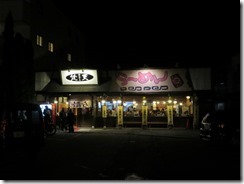
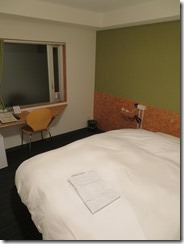
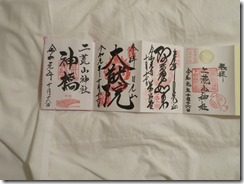
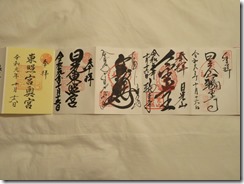
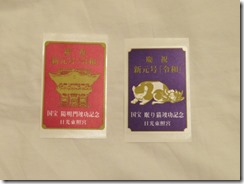
It does look so lovely and green. The trees seem very tall!
woww!! great writing, i enjoyed!
I would love to visit nikko!